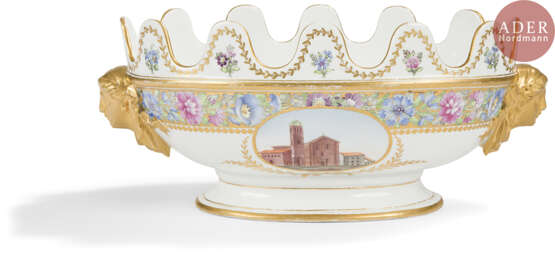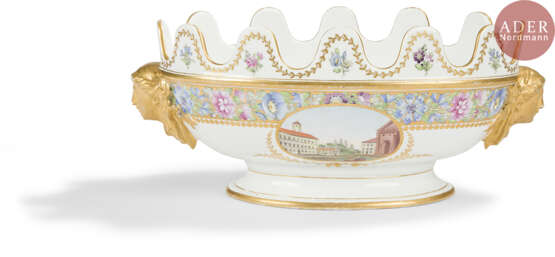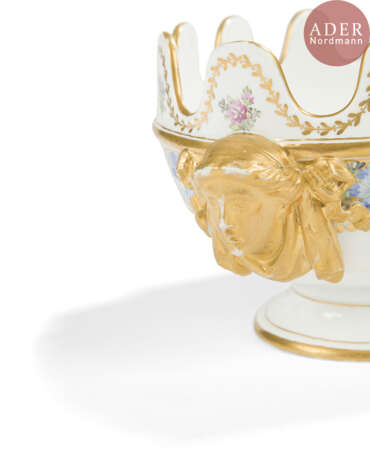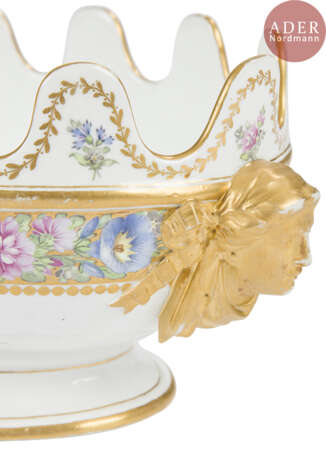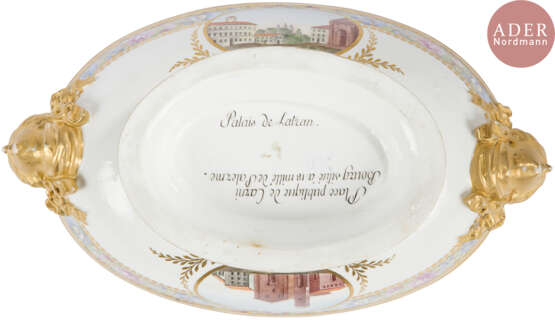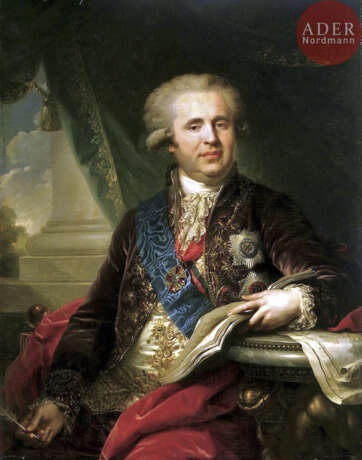ID 12397
Lot 233 | RARE VERRIÈRE DU SERVICE DIT DU CABINET, COMMANDé PAR CATHERINE II
Estimate value
€ 10 000
Manufacture impériale de Porcelaine, Saint-Pétersbourg, époque Paul Ier (1796-1801).
Marque au chiffre du tsar en bleu sous couverte.
L. 25,5 x H. 12,5 cm
Provenance : Service dit du Cabinet, commandé en 1793 par l’impératrice Catherine II de Russie qui l’offrit comme présent au prince Alexandre Andreevich Bezborodko (1747-1799). Il fut payé par le Cabinet, ce qui est probablement l’explication de son nom aujourd’hui. Composé de plus de 900 pièces, ce qui en fait le service le plus grand du XVIIIe siècle en Russie, il comprenait les pièces nécessaires pour servir le dîner, le dessert et le thé. Réassorti jusqu’en 1801, il reviendra à la Couronne suite à la mort du prince en 1799. Les scènes italiennes ont été copiées à partir de grandes sources illustrées telles que « Della Magnificenze di Roma antica e moderna », par Giuseppe Vasi da Corleone (Rome, 1764) et « Antichita Romane opera » de Giambatista Piranesi (Rome, 1756). Selon Boris N. Emme, conservateur des arts décoratifs du Musée national de l’État, l’impératrice a utilisé le service pour continuer une tradition inaugurée par Pierre Ier, dans laquelle le souverain testerait la connaissance des jeunes hommes aristocratiques qui avaient récemment complété un programme scolaire. Comme l’a décrit Emme, « les représentations sur le service de monuments historiques spécifiques ont fourni des thèmes pour les directions de la conversation sur table, au cours desquelles le niveau de connaissance des invités testés a été précisé. Si les jeunes nobles avaient été particulièrement perplexes, ils trouveraient les emplacements des scènes italiennes identifiées au bas de chaque pièce. Le service servit de source dans les formes et la décoration pour plusieurs autres qui suivirent, comme le service de dot des filles de Paul Ier. »
Bibliographie : N.B. von Wolf, Imperatorskii farforovyi zavod, 1744-1904, St Pétersbourg, 2003, pp. 83-84, 88-89. T. Kudriatseva, Russian Imperial Porcelain, St Pétersbourg, 2003, pp. 65-67. Une verrière et une assiette de ce service sont illustrées dans : La porcelaine russe, Léningrad, 1968, cat. 46-47.
| Address of auction |
Ader 3, rue Favart 75002 Paris France | |
|---|---|---|
| Preview |
| |
| Phone | 01 53 40 77 10 | |
| Fax | +33 (0)1 53 40 77 20 | |
| Buyer Premium | 25.000 | |
| Conditions of purchase | Conditions of purchase |
